I underwent a full fitting service where my foot was analyzed and an orthosis made based on that. I was also given recommendations to improve the condition of my feet and prevent injuries. With the new insoles, the fascia problem disappeared and I was able to walk again. Since then I have walked more than 5,000 km. While using the insoles I had two adjustments due to wear and tear. At one point I thought I would have to buy new insoles, but for now the correction is enough. Nikolaj always listens carefully to the complaints, makes a diagnosis and adapts the insoles to the condition of the foot. I've been running a lot lately, so I've spent a lot of time doing the foot exercises recommended by Nikolaj. A big thank you to Nikolaj for his work and valuable advice!

- Useful Articles
- Process for the manufacture of orthopedic insoles
- How do you recognize flat feet?
- At what stage does the struggle with flat feet begin?
- INDICATIONS FOR USE OF INSOLES
- How to use orthoses correctly
- We make custom insoles for adults and children.
- Our product range our insoles
- Advantages of our insoles compared to similar insoles
- Orthotics for children
- For flat feet
- pregnancy
- The production of the individual SIDAS insoles takes place in 3 steps
- Questionnaire, anthropometry and functional analysis of the foot.
- design of the insoles
- As a result of contact with MySportExpert
- WHY DO I NEED AN ORTHOPEDIC SHOE?
- Who is recommended to wear insoles?
- How are custom insoles made in our clinic?
- What is the benefit of Extempo custom insoles?
Useful Articles
The technique was developed in the Department of Traumatology, Orthopedics and Arthrology of the Faculty of Medical Education of the Russian People's Friendship University in cooperation with specialists from OrthoLite (USA) and German orthopedists.
- The OrthoLite Orthopedics Clinic makes it possible within within minutes to make personal orthopedic insoles that take into account the individual characteristics of the patient's feet;
- prepared by by a specialist Professional capable of considering the patient's pathology;
- use of German materials creates durability and comfort in daily use;
- possibility of perfect adjustment of the arch of the foot in a fully corrected position resulting in improved comfort;
- repeatability gradual correctionReproducible level correction, especially useful for children;
- Compatibility of insoles The compatibility of the orthosis with all types of shoes, including high heels from 2 to 12 cm, means that it is universal for all categories of patients. 'universally suitable for all patient categories;
- affordable for almost everyone.
Process for the manufacture of orthopedic insoles
In this process, custom orthopedic insoles and semi-insoles are manufactured from flat blanks, taking into account the size of the foot, the deformity present, and the type of footwear worn by the patient. The basis of the semi-finished product is a special thermoplastic material that becomes plastic under the influence of temperature and can be molded directly to the patient's foot. The insole is made on a flat surface or on a shoe set that simulates the position of the foot in a heeled shoe. It is more convenient to produce on a special planoscope with a Haider gauge, which contains a set of insoles for different heel heights. If the patient wears shoes without heels or with a heel height of up to 3 cm, the insole is made directly on the Heider gauge on a flat surface without using washers.


After examining the patient's foot, taking into account the foot deformity and the type of footwear in which the patient will wear the insoles, the type of semi-insoles is determined. The appropriate half insole for the foot size is then removed. Heat the semi-finished product on the plantar side. Heat the insert with a special hair dryer.

The distance from the nozzle of the hair dryer to the middle part of the insert (the protrusion of the thermoplastic material) is 5-7 cm. A sign that the blank is finished is its plasticity. The heated blank is placed on the platform under the insole. A special rubber band is placed in the longitudinal arch prominence and an insole in the diaphyseal prominence of the metatarsal to model the transverse arch.
The patient sits with the tibia perpendicular to the platform surface during the insole simulation. The assistant fixes the heel bone and the heads of the 1st and 5th metatarsal bones, bringing the foot into a physiological position. The insole is modeled by stretching the rubber band to the shape of the surface of the sole of the foot.
How do you recognize flat feet?
The invariable symptoms of flat feet are:
– pain in the shins and joints of the feet;
– Frequent formation of calluses (corns);
– deformation of the forefoot and toes;
– Conspicuous discolouration on the ankles;
– heel spur.
When flatfoot syndrome develops, a large part of the load is borne by the knee joints. Because they act as shock absorbers, they are subjected to excessive pressure. The changes caused by this compression can lead to osteoarthritis. This in turn leads to coxarthrosis (arthrosis of the hip joints).
The spine is most affected. At first, the spastic muscles of the back feel tired. Over time, a chain of serious diseases develops. At the top of this chain is osteochondrosis. Then the vertebrae deform, herniated discs develop, nerve entrapment, scoliosis, kyphosis, etc. can occur.
At what stage does the struggle with flat feet begin?
Flat feet appear in childhood. Most children suffer from this condition. Doctors recognize this disorder as soon as the child takes its first steps. Parents should therefore have their child examined by a specialist from time to time, even if everything seems to be fine with their feet.
The training of the foot takes place in the first five years. At this stage, it is important to recognize abnormalities and start treatment immediately. Later this is much more difficult than it seems.
Comprehensive treatment consists of a combination of methods such as wearing orthotics and daily exercise. True, she does not completely eliminate the problem, but only stops its development, but she saves the child's spine and prevents dire consequences.
INDICATIONS FOR USE OF INSOLES
- flat feet
- heel spur
- back pain
- intervertebral fractures
- deformation of the big toe
- Leg curvature, scoliosis
- Diabetic foot syndrome
Orthopedic insoles FORMTHOTICS Price per set for a pair of shoes.
An orthopedic traumatologist does not only deal with the treatment of injuries. The main task of the orthopedist and traumatologist is the rapid elimination of pain and the initiation of repair processes in the damaged tissues of the musculoskeletal system, regardless of the cause of the injury.
Ozone molecules have powerful antiseptic and antibacterial properties. Intravenous infusions with ozonated solutions saturate the blood with active oxygen and immunize the body against infections and viruses.
Biomaterial sampling, blood chemistry, urine analysis, stool analysis, cytology, spermiogram, detection of allergies, infections, oncomarkers, vitamins, hormones - all this and much more can be carried out in our clinic
Saturation of the body with oxygen increases vitality, helps to intensify the effects of treatments, strengthens the immune system and triggers regeneration and rejuvenation processes. In 2020, Israeli scientists made a sensational discovery: a barotherapy regimen can rejuvenate the body at the cellular level for 10-20 years. Barotherapy is also used to regenerate damaged lungs.
How to use orthoses correctly
The orthosis must fit snugly against the sole of the shoe and must not move.
As with any orthopedic aid, the custom-made orthoses should also be used gradually, ie the wearing time should be gradually increased until the orthosis is worn for fourteen days.
It is advisable to make several pairs of insoles for each shoe that is worn constantly. If you have a pair of insoles, it is necessary to move the insoles from one shoe to another (even at home) to achieve permanent orthopedic correction.
Dry the insoles at room temperature after removing them from the shoe. Never use a hair dryer or heater to dry your insoles (this can deform the skeleton of the insoles).
Like all clothing and shoes, insoles require care. They should be removed from the shoe and wiped down with alcohol wipes at least once a week.
We make custom insoles for adults and children.
All materials used in the manufacture of insoles have passed independent toxicological tests and are anti-allergic.
Our product range
our deposits
- ◆ Proper development of your child's feet and joints
- Correct posture, even distribution of body weight on the feet
- ◆ Development of a balanced gait pattern
- Essential for children with congenital or acquired deformities of the lower limbs and spine
- Supports the child's feet in an anatomically correct position
- Effective correction of flatfoot, valgus, clubfoot, heel spurs and other foot pathologies
- ◆ Restoration of normal biomechanics and blood supply.
- Stopping the progression of deformities.
- ◆ Rehabilitation after injuries and operations.
- ◆ Even distribution of the load on the feet.
- ◆ Even load distribution on hips and back.
- ◆ Prevention of swelling in the lower limbs. Improvement of the lymph flow.
- ◆ Reducing the burden on the abdominal organs and the fetus.
- ◆ Improved blood circulation: reduced risk of venous insufficiency
- ◆ Improved foot cushioning function
- ◆ Relief from tiredness and heaviness in the legs
- ◆ Protection against flat feet
- Anti-inflammatory effect
- ◆ Reducing the risk of developing ulcers
- ◆ Compensatory 'oblique' element in existing toe amputations
- ◆ Pressure relief for overweight feet
- ◆ Compensatory element for toe amputations
- ◆ Improving blood circulation in the feet
- ◆ Painless and easy on the joints
- ◆ Correct biomechanics of the feet
- ◆ Softening of the impact with each step
- ◆ For rehabilitation after injuries
- comfort and energy
Benefits of our insoles
Compared to similar insoles
- Individual 3D computer modeling based on digital results
Static and dynamic foot diagnostics. - ▶ High precision (0.1mm) placement of all orthopedic and corrective components based on numbers and not 'by eye'.
- ▶▶ Supporting the feet in an anatomically correct position, taking into account the unique anatomical profile and necessary correction of each foot.
- ▶▶ Suitable for any weight, any age, any type of footwear and any activity.
- ▶ Works with many known foot deformities and pathologies.
- ▶ Maximum therapy effect.
- ▶ Comfort in the corrected position. No pain when walking.
- ▶ Guaranteed German quality!
Here you can ask your free question and get an answer from your orthopedist. It also helps if you attach photos.
Your doctor will reply to you within 24 hours.
To correct flat feet, valgus and hallux valgus, thumb bones, support the foot in an anatomically correct position and evenly distribute the load on the foot when walking and running, the use of orthopedic insoles is essential. With the help of CAD/CAM technology, custom-made insoles are modeled for each patient based on the individual deviation of the right and left foot, the presence of complications, weight, the condition of the spine and other body characteristics.
The total duration of work in this field is 12 years.
Primary Education: Ural State Medical Academy (USMA),
Specialist training in orthopedics and traumatology at the regional children's hospital:
Children's Regional Clinical Hospital;
Sverdlovsk Regional Clinical Hospital No. 1;
Medical center Bonum with several profiles;
Orthotics for children

The main focus when developing the insoles was on the safety and environmental compatibility of the materials used.
They are made of a thermoplastic material that molds to the child's foot when heated. The product then needs to set and can be used to correct the foot.
Since the child's body is not yet fully developed, the ligaments and joints are very flexible and easy to correct.
Good results can be achieved if the pathology is identified and treated in a timely manner. In this case, the consequences will be minimal.
The trend is that the number of children with flat feet and club feet is increasing rapidly every year. Heredity and wearing inappropriate footwear may play a role. Over time, all of this can contribute to the development of the problem.
Orthotics for children provide the correct support for the position of children's feet and eliminate the slightest risk of developing a crooked foot.
The right choice can only be recommended by an experienced podiatrist who can identify any anomalies.
Treatment and prevention may be recommended for your child.
For flat feet
Orthoses for flat feet are special shoes. They are important to support the arch of the foot and correct the abnormalities caused by flat feet.
- Improves blood circulation in the feet;
- Increases stability when walking and standing;
- Reduces stress on ankles;
- Prevents unhealthy changes in the musculoskeletal system;
- Reduces foot fatigue.
All these properties allow the loads to be distributed correctly.
The right type of insoles, taking into account the individual characteristics of a person, allows you to wear them without discomfort.
What is the difference between orthoses for transverse and longitudinal flat feet?
- Transverse foot insoles are used to correct the transverse arch and to prevent transverse flat feet. They have a heel adjuster and a toe separator in the shape of a roller.
- Insoles for longitudinal flatfoot differ in the height of the trainer, which is intended to correct the longitudinal arch of the foot. They feature wedges that allow you to change the angle of your foot as you walk.
When the load is properly distributed, a person can walk normally without tiring or suffering pain. The other joints are also protected from wear and tear.
pregnancy
The need for insoles during pregnancy arises from the fact that the load on the legs increases enormously. This is a good reason to think about how to minimize this side effect.
Why does the pressure on the feet increase? The fact is that pregnancy shifts the weight of the body forward. As a result, leg strain symptoms such as varicose veins and leg swelling can occur.
Orthoses are used to correct the stress on the feet.
The production of the individual SIDAS insoles takes place in 3 steps
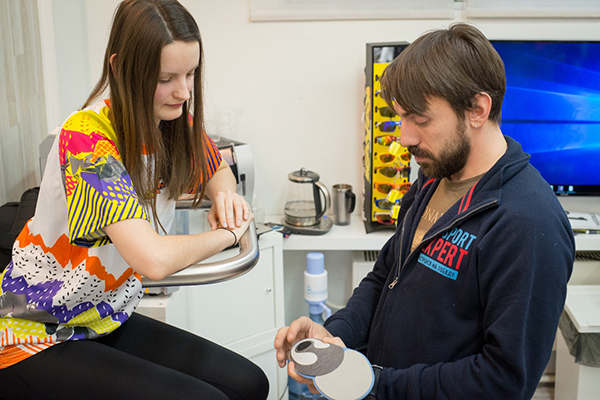
Questionnaire, anthropometry and functional analysis of the foot.
During the survey, the expert asks about previous injuries, problems experienced and what the client expects from the insoles.
The analysis is done with a strain gauge platform that provides a detailed picture of the stress distribution in static and dynamic position. This helps determine foot resilience and predict potential injury sites.
The expert recommends exercises to reduce injury factors, and it becomes clear how effective the orthotics will be.
Lower limit: You will receive a foot function analysis report in the mail, describing the structure of your foot and making recommendations. The appraiser will also identify if there is a risk of injury, make recommendations on how to avoid it and identify the characteristics of future insoles.

40 minutes.
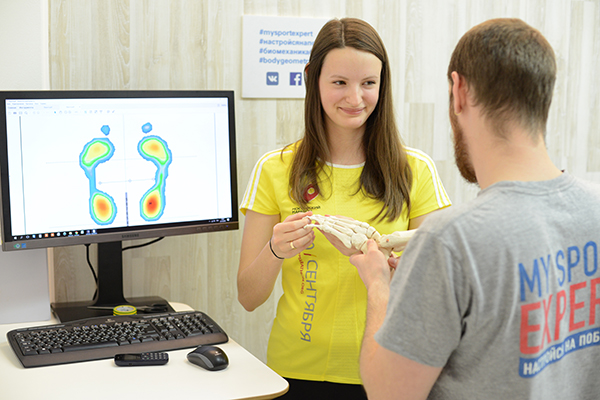
design of the insoles
Based on the results, the final selection of the preform for the future insoles is made and the necessary correction elements are identified.
The semi-finished product is placed in a furnace where it is sintered under vacuum conditions and becomes flexible.
The footprints are formed on special pads. According to the impressions, the necessary components are inserted into the softened molds and the whole is placed in the mold.
Depending on the type of sport, the characteristics of the form and other factors, the curing process can occur at different loads and times.
Lower limit: Anatomical insoles that adapt to your foot, taking into account the type of sport you practice.
As a result of contact with MySportExpert
Collection of questionnaires and anthropometric data
Static and dynamic analysis on a strain gauge platform
Recommendations for visits to other specialists
You can also expect an analysis of your foot function, followed by the fitting of a custom insole for your foot.
Recommendations for visits to other specialists
It is possible to make insoles for other sports such as cycling, hockey, football, figure skating and others.
Insoles for different sports have different starting points because the foot works differently in the shoe.
Therefore, when making insoles, we take into account not only your physiological characteristics, but also the type of sport you practice.
*For the cost of other insoles, please call us.
In addition to an analysis of your foot function, you can get a complete analysis of the biomechanics of your running
an opinion on whether and which insoles you need
A list of running shoes that are right for you.
Recommendations to other specialists
WHY DO I NEED AN ORTHOPEDIC SHOE?
At risk are women who like to walk in high heels and people whose work puts a lot of strain on their joints. Custom-made orthotics are a great way to prevent musculoskeletal disorders. The main difference between these insoles and regular insoles is that their shape helps the foot find proper alignment, thereby reducing stress on the spine.
You can order custom-made insoles in the Doctor Ost medical center.
Who is recommended to wear insoles?
It's a common misconception that only people with flat feet need orthotics. However, this is not the case. Orthotics can be used by all children whose feet are just forming, as well as athletes, the elderly and those who spend most of their time standing. You can find out which orthoses are suitable for you in a consultation with an orthopedist at Doktor OST.
The costs are listed in our price list under 'Rehabilitation'. Pay attention to our special offers and don't miss a good price!
How are custom insoles made in our clinic?
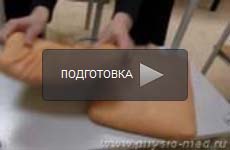
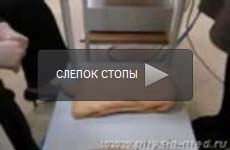
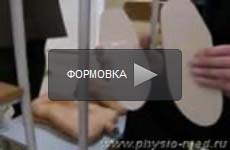
The Extempo custom insole process begins with making an accurate impression of the patient's foot on a special vacuum membrane for both feet.
When taking a footprint, all the anatomical features of the patient's foot and the main purpose of the insole are taken into account.
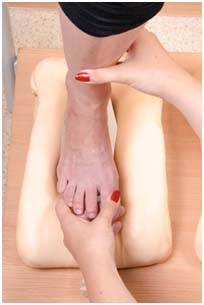
The footprint is adjusted so that the insole relieves the foot to the required extent. An impression is made for the other foot in the same way.
The preheated blank insole is placed in the impression and pressed against the patient's foot for 20-30 seconds.
After 5-6 minutes, the insole can be inserted into the shoe.
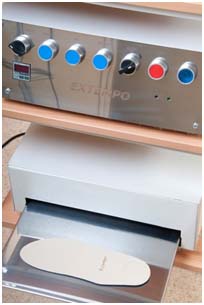
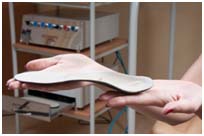
The thickness of the insole and the height of the longitudinal arch can be optimally adjusted with the Extempo insole. Too low or too high pads can have a negative impact on the therapeutic properties of the pad).
What is the benefit of Extempo custom insoles?
- Absolute precision and individuality.
- Individual adjustment of the material thickness, the height of the foot arch and the cushioning properties of the insole for an optimal therapeutic effect.
- Fast crafting time (maximum 20 minutes).
- The technology makes it possible to immediately assess the patient's subjective sensation and, if necessary, to make immediate corrections.
In addition to arch abnormalities (flattening), other pathological abnormalities may also occur, such as: a longitudinal deviation of the heel, different lengths of the patient's feet, etc. Such anomalies can be successfully corrected with the extempo technique and the use of special orthoses in the presence of the patient. The comfort and effect of individual insoles made by any method are visible only after some time of wearing. The Extempo technology makes it possible to make the necessary adjustments to the shape of the insoles even after prolonged wear.
To find more information about 'custom orthopedic insoles' use the terms: heel spur and custom orthopedic insoles, custom orthopedic insoles, extempo insoles, custom orthopedic insoles price,Khimki, Doloprudny, Mytishchi, Bibirevo, Timiryazevskaya, Otradnoye, Altufievo.
Read more:- Customized orthoses.
- orthoses for children.
- orthoses.
- Orthotics for flat feet.
- Field reports on custom-made orthoses.
- Orteka – made-to-measure orthoses.
- What does the insole of a child's shoe look like?.
- Orthoses for valgus in children.
